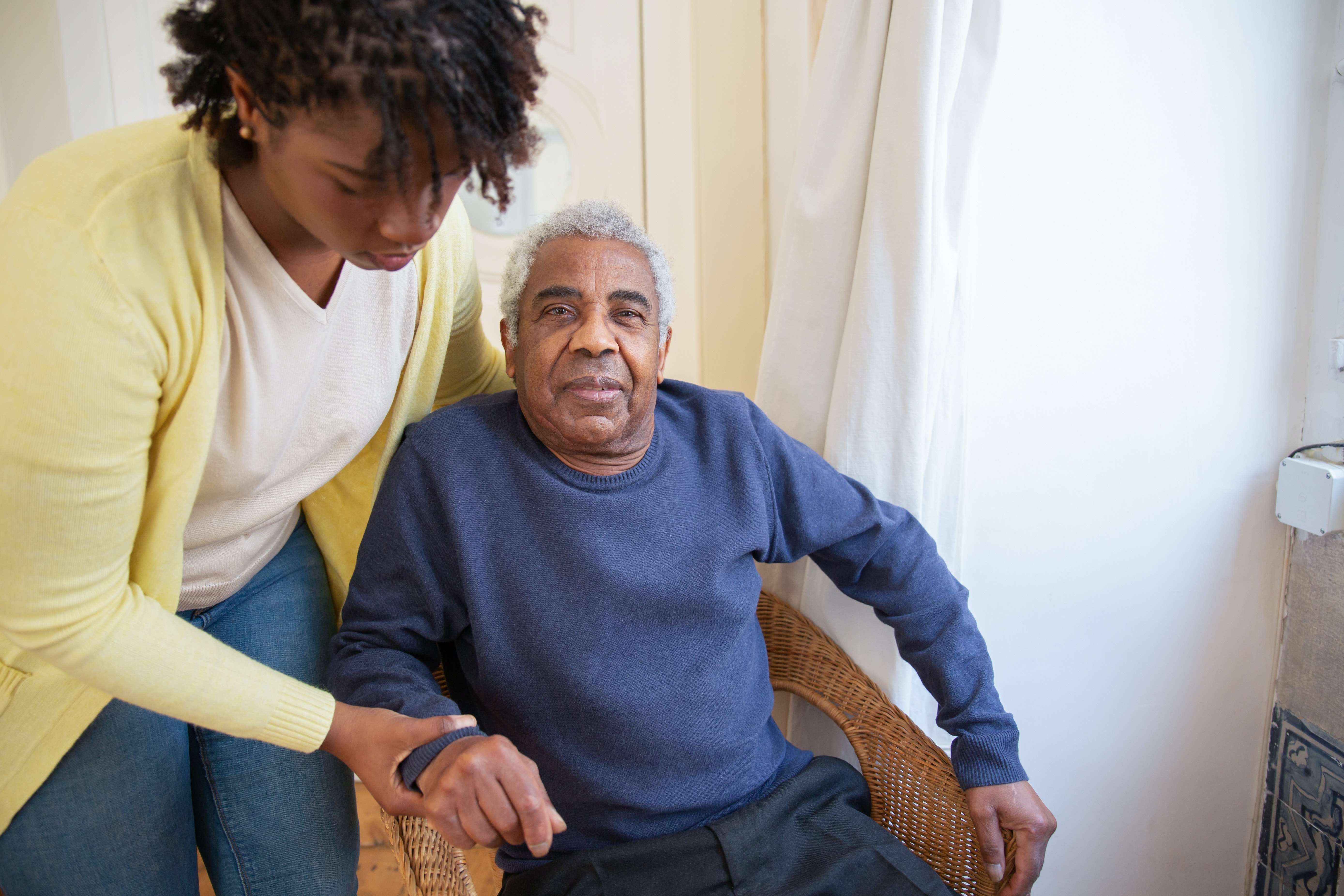How to Help a Senior with Sight Problems

The best thing caregivers can do is learn as much as possible about their care recipient’s visual issues and how limiting they are. This information will help you find ways to modify the environment and your behaviour to allow for better care. Though individual conditions will vary and affect eyesight differently, the tips ahead are a good starting point to help visually impaired seniors. They will help them maintain a level of independence:
Good Lighting is Important
You should ensure you keep your surroundings well-lit, but you must also be careful about any glare. Using specialised bulbs and lamps to increase contrast and reduce glare is a good step, but you should also cover any reflective surfaces. Direct task lighting is suitable for reading, crafting and other activities requiring attention and sitting in place. You can use a small clip-on lamp or a gooseneck one. Under-the-counter lighting is another kind that works well with kitchen spaces and larger work areas. It would help if you avoided strong lights shining into a dark room. Task lighting being increased means the surrounding room lighting must also be improved. Keeping lights on during daylight hours may help equalise light from outdoor and indoor sources.
Eliminating Fall Risks
You should use nightlights in bedrooms, bathrooms and hallways to reduce any risk of tripping or falling during night hours. Eliminate all clutter and remove tripping hazards such as electrical cords or throw rugs. Think about replacing or at least relocating furniture that is difficult to see - side tables, glass coffee tables, etc. Create a wider and clear walking path that leads to all areas for easy navigation. You may have to change the positions of some furnishings to make your home easier to navigate. This may feel disorienting initially, so make sure you help your loved one get around until they memorise the new interior. Larger rearrangements may be a problem, especially for seniors with memory issues.
Improving Your Household Organisation
Combine visual and tactile sensations to help seniors to navigate their environment. You need to designate spots for more commonly used items, ensuring you return things where they belong each time, so your loved one will know where they are. Sometimes you can use a basket to store objects, making it easier to find keys, remotes and the like. Rubber bands, felt, raised plastic dots, sandpaper cutouts, and more can be used to differentiate objects tactilely. Visual systems use whatever vision remains in your loved ones to help organise and identify things. Typical examples may include larger labels or coloured stickers to help identify items and places.
Use of Contrasting Colours
The contrast between light and dark colours is significant for daily activities, especially in cases where the person has some remaining vision left. These colours help people with visual impairments to detect doorways, stairs, furniture, smaller objects and more. Examples can be seen with white cutting boards for preparing darker foods and darker cutting boards for lighter foods like onions, apples and so forth. That would allow your loved ones to retain some independence and promote their safety. This is especially important for settings like bathrooms, as they tend to be of monotone colours, which may be a risk. Choose towels, bath mats and washcloths in colours that contrast with the walls, the shower or tub, etc. The same goes for counters and flooring. Painting door jambs in a contrasting colour will help your loved ones spot the location of the door. You can do the same by painting the edges of steps and doors.
